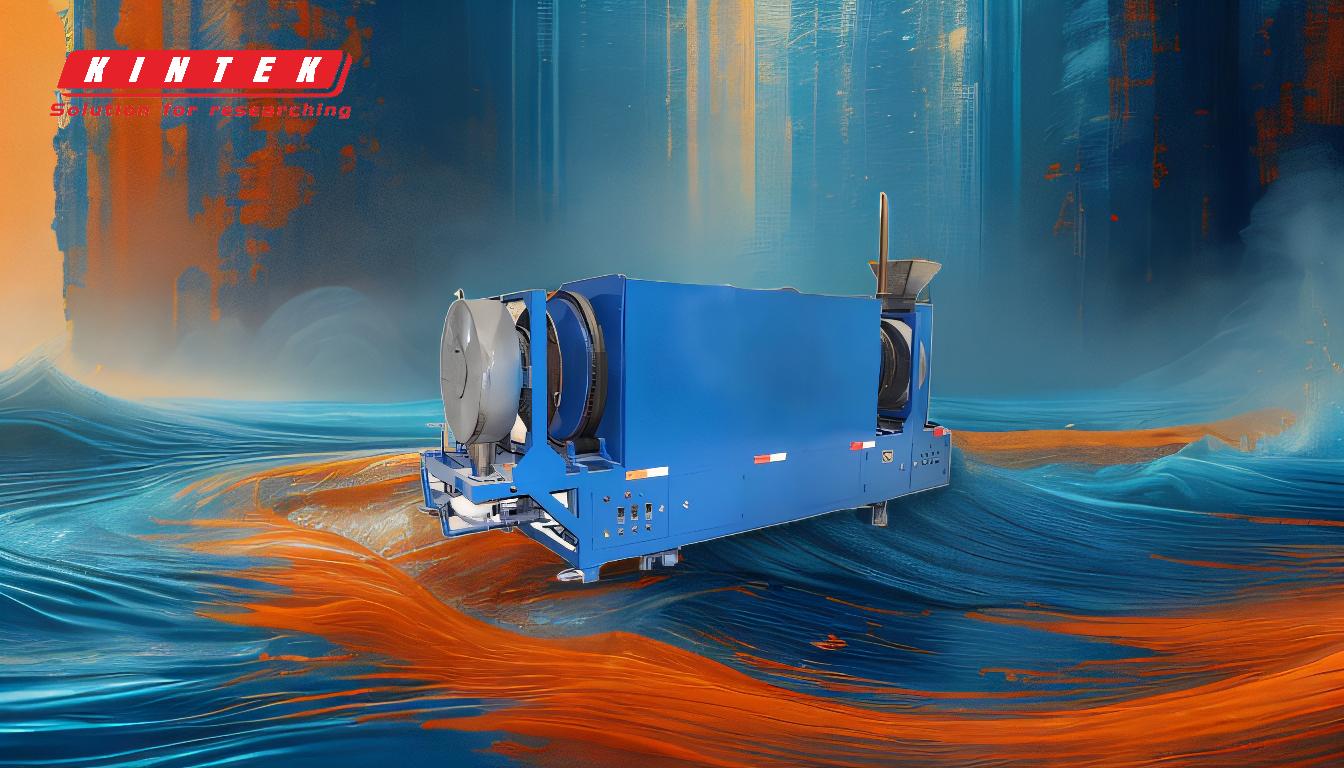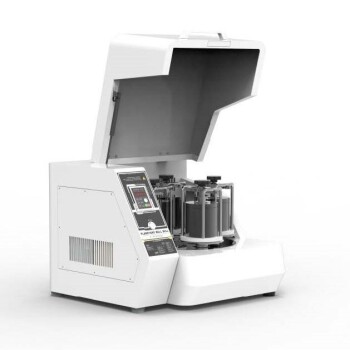At its core, tire pyrolysis is a form of advanced thermal recycling. It is a process that uses high heat to break down waste tires in a sealed, oxygen-free environment. Instead of burning the material, this controlled thermal decomposition deconstructs the rubber's complex polymer chains into simpler, valuable components: a synthetic fuel oil, a solid carbon residue known as carbon black, steel wire, and a combustible gas.
Tire pyrolysis addresses the critical challenge of tire waste by converting it from a landfill problem into a source of commodity products. It is not simple incineration; it is a chemical conversion process aimed at resource recovery within a circular economy framework.
The Pyrolysis Process: A Step-by-Step Breakdown
To understand tire pyrolysis is to understand a multi-stage engineering system. Each step is designed to efficiently separate and refine the constituent materials locked inside a tire.
Pre-Treatment: Preparing the Feedstock
Before entering the reactor, tires often undergo preparation. This typically involves using a wire drawing machine to pull out the heavy steel bead wire and shredding the rest of the tire into smaller, more manageable pieces for consistent heating.
The Reactor: The Heart of the Operation
The prepared tire material is fed into a sealed pyrolysis reactor, often a large rotating kiln. The key principle here is anaerobic heating, meaning the material is heated to high temperatures (typically 400-600°C) in the complete absence of oxygen.
Thermal Decomposition in Action
Inside the oxygen-free reactor, the intense heat causes the rubber's long polymer chains to crack. This doesn't burn the material but instead breaks it down into volatile gases and solid residues. The rotation of the reactor ensures all the material is heated evenly.
Product Separation and Collection
The volatile gases exit the reactor and pass through a cooling system. Here, they condense into a liquid known as Tire Pyrolysis Oil (TPO). Any gas that does not condense is collected separately as non-condensable or "syngas." The solid materials left behind in the reactor—carbon black and steel wire—are collected via a discharge system.
The Four Key Outputs of Tire Pyrolysis
The value of pyrolysis lies in its ability to reclaim distinct, marketable products from a single waste stream. The proportion and quality of these outputs depend heavily on the specific process conditions, such as temperature and heating rate.
Pyrolysis Oil (TPO)
This is the primary liquid product, often comprising 40-50% of the output. It is a complex synthetic oil that can be used directly as an industrial fuel in furnaces or boilers, or it can be further refined into more valuable products like diesel.
Carbon Black
This solid, carbonaceous residue makes up about 30-35% of the output. This is not the same as high-grade virgin carbon black but can be used as a solid fuel, a base material for pigments, or a low-grade reinforcing filler in rubber and plastic products.
Steel Wire
Recovered from the tire's internal structure, the steel wire accounts for 10-15% of the material. It is a clean, high-quality scrap metal that can be easily sold to steel mills for recycling.
Non-Condensable Gas
This stream of combustible gases (including methane, hydrogen, and carbon monoxide) represents about 5-10% of the output. In a well-designed plant, this gas is recycled directly back to the system to heat the pyrolysis reactor, significantly reducing the plant's reliance on external fuel and improving its overall energy efficiency.
Understanding the Trade-offs and Challenges
While promising, tire pyrolysis is not a perfect solution. An objective evaluation requires acknowledging its operational complexities and potential downsides.
Product Quality is Variable
The value of the outputs is not guaranteed. The quality of both the pyrolysis oil and the carbon black can vary significantly based on the feedstock and process parameters. Often, these products require further processing or purification to meet market standards, which adds cost and complexity.
The Importance of Emission Control
The process itself is enclosed, but heating the reactor requires burning fuel. This combustion, along with any fugitive emissions, must be managed with robust gas treatment and smoke scrubbing systems to prevent air pollution. A "clean" pyrolysis operation is the result of diligent engineering, not a default feature.
Economic Viability Hinges on Markets
The profitability of a pyrolysis plant is directly tied to the fluctuating market prices for scrap steel, fuel oil, and low-grade carbon black. High operational costs for energy, labor, and maintenance must be carefully balanced against the revenue from these commodity products.
How to Evaluate a Pyrolysis Project
When considering the viability of tire pyrolysis, your evaluation should be guided by your primary objective.
- If your primary focus is waste management: Prioritize the system's processing capacity, reliability, and its ability to handle feedstock with minimal pre-treatment.
- If your primary focus is resource recovery: Scrutinize the quality and consistency of the output products, demanding detailed specifications for the pyrolysis oil and carbon black to ensure they meet end-market requirements.
- If your primary focus is environmental impact: Insist on transparent data regarding the plant's total energy balance, the effectiveness of its emission control systems, and its plan for managing all byproducts.
Ultimately, tire pyrolysis is a powerful chemical recycling technology, but its success depends on sophisticated engineering, disciplined operation, and a clear-eyed view of market realities.
Summary Table:
| Output Product | Typical Yield | Primary Uses |
|---|---|---|
| Pyrolysis Oil (TPO) | 40-50% | Industrial fuel, diesel refining |
| Carbon Black | 30-35% | Solid fuel, pigments, filler |
| Steel Wire | 10-15% | Scrap metal recycling |
| Non-Condensable Gas | 5-10% | Fuels the reactor, energy source |
Ready to transform your waste tires into profit? KINTEK specializes in advanced pyrolysis equipment and solutions tailored for laboratories and recycling facilities. Our systems are engineered for efficiency, safety, and high-quality output—ensuring you maximize resource recovery while minimizing environmental impact. Contact us today to discuss how our lab equipment and consumables can support your tire pyrolysis projects!
Related Products
- Laboratory Test Sieves and Sieving Machines
- Laboratory Sterilizer Lab Autoclave Vertical Pressure Steam Sterilizer for Liquid Crystal Display Automatic Type
- Laboratory Homogenizer Mixer Benchtop Homogenizer with 8 Inch PP Chamber
- Anti-Cracking Press Mold for Lab Use
- Graphite Vacuum Furnace IGBT Experimental Graphitization Furnace
People Also Ask
- What is one limitation of using the sieve method? The Problem with Non-Spherical Particles
- What are the limitations of sieve size analysis? Avoid Costly Errors in Particle Characterization
- What are the disadvantages of sieve analysis method of particle size analysis? Key Limitations to Consider
- What is ASTM standard sieve? Ensure Precision in Particle Size Analysis
- What is the machine used for sieve? Automate Your Particle Analysis with a Sieve Shaker



















